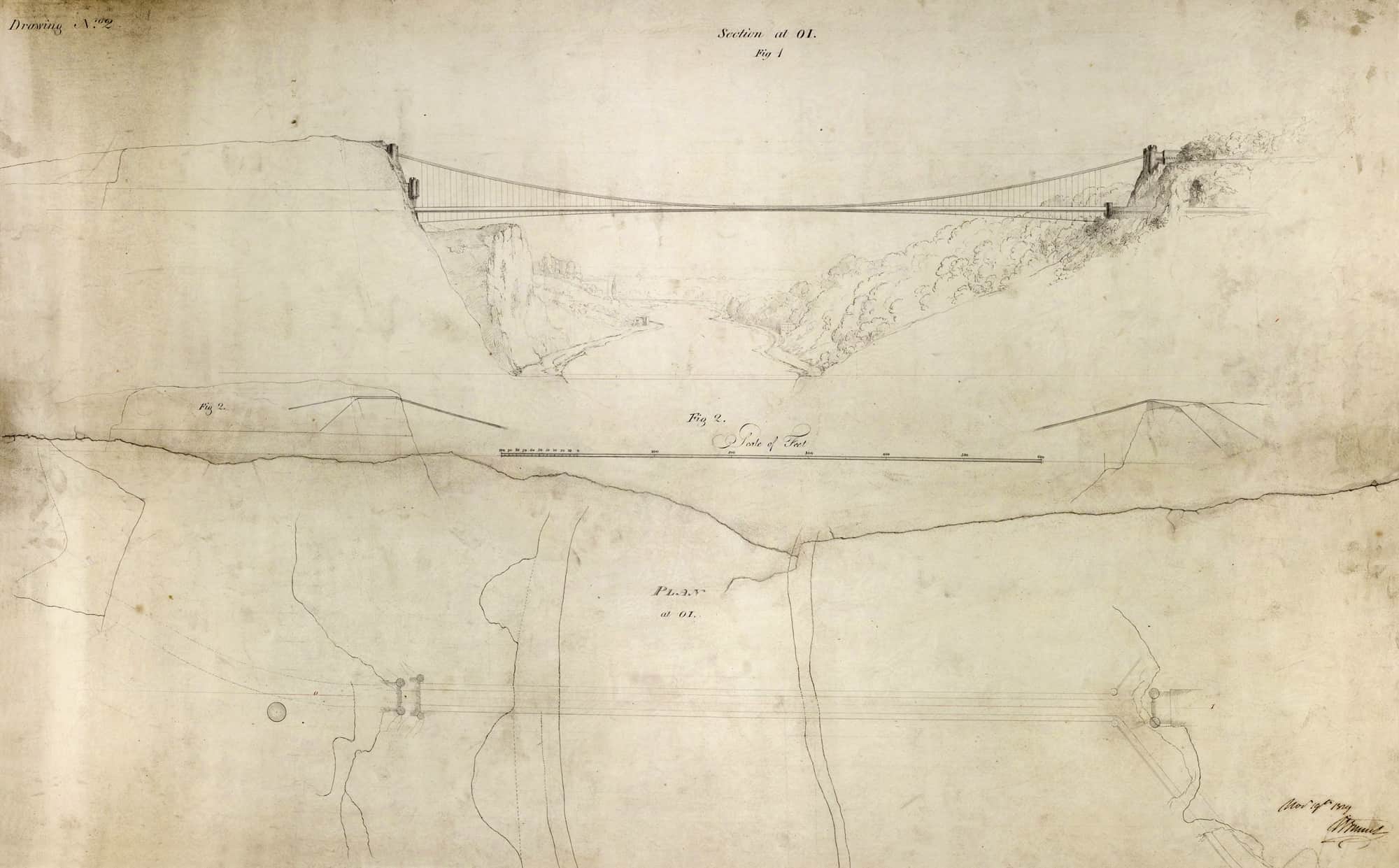- In 1829, a competition was launched to design a bridge to cross the River Avon at Clifton in Bristol. The prize was 100 guineas (a lot of money at the time!). 22 different designs were entered hoping to be selected as the winner.
- This sketch was part of Brunel’s entry to the competition held in 1829. Brunel was 23 years old when he created this design.
- At first no winner was selected. The judges faulted all the designs and thought that Brunel’s design, although innovative and attractive, would not cope with the Avon Gorge’s frequent windy weather. In 1830, a second round of the competition was announced. Brunel changed his design, tried again and was awarded second place. He was later declared the winner after he persuaded the judges and agreed to make extra changes to his design.
- Today, you can still see and cross Brunel’s dramatic Clifton Suspension Bridge in Bristol.
The Story
The Competition
In 1829, Isambard Kingdom Brunel was recovering from injuries sustained while working on the construction of London’s Thames Tunnel. Although he was instructed to rest, he kept working; entering a competition to design a new bridge to span the Avon Gorge in Bristol.
William Vick, a Bristol wine merchant, had given money to fund the Bridge’s construction. In 1829, the Society of Merchant Venturers held a competition to choose the best bridge design. The committee judging the competition asked well known engineer Thomas Telford for his advice. He asserted the logic of the time that a suspension bridge could be no longer than 600 feet (about 182 metres). Brunel’s design proposed a suspension bridge that was much longer at between 870 and 916 feet (about 260 – 279 metres) long.
Even though Telford submitted his own design, no suitable design was found from the 22 entries so a second competition was held in October 1830. This time, Brunel shortened his bridge design to 630 feet (192 metres) which earned him second place. He was later declared the competition’s winner after he persuaded the judges and agreed to make extra changes to his design. Brunel also got the job as Project Engineer



